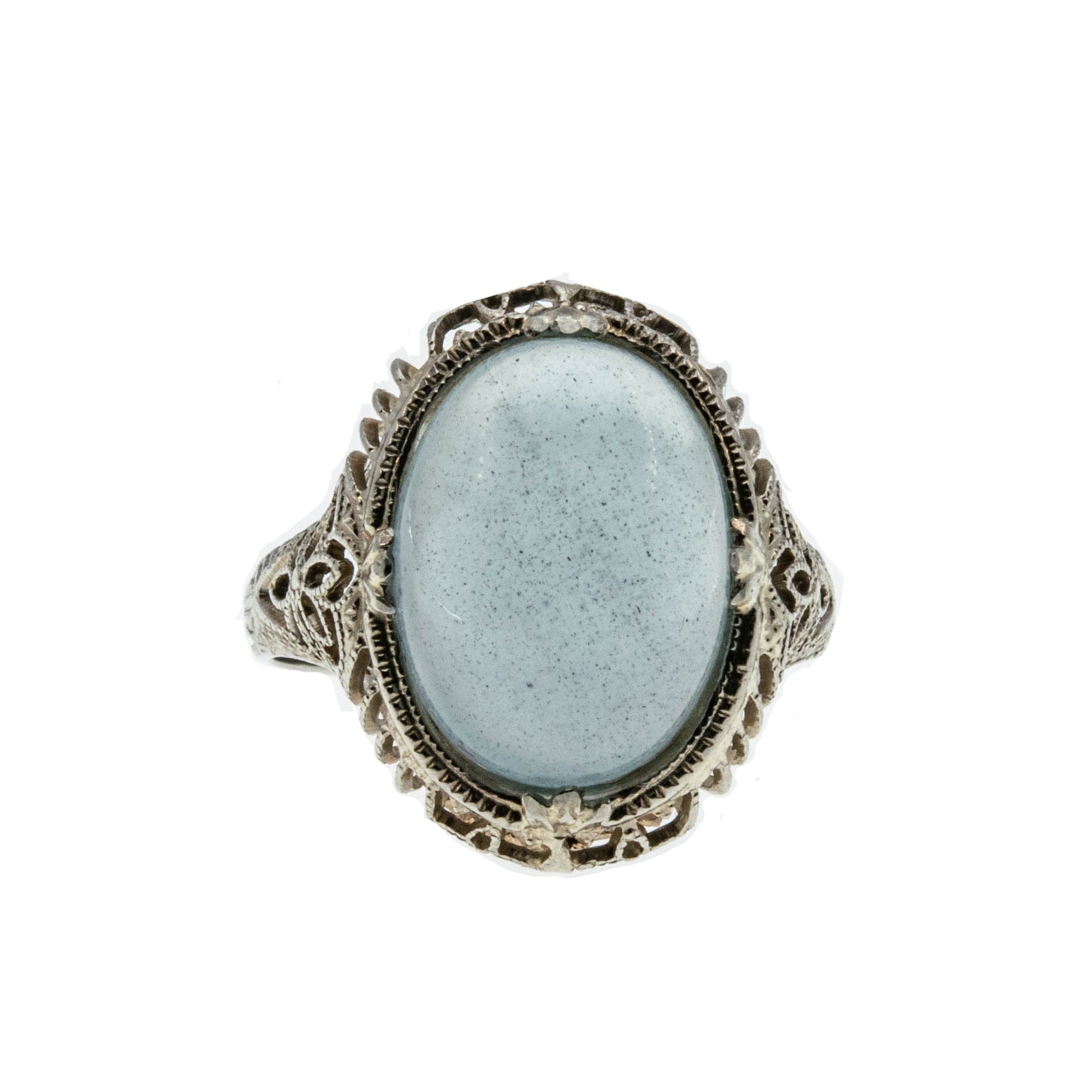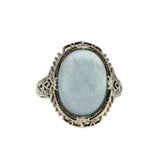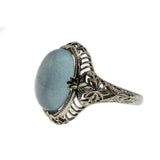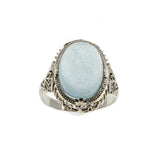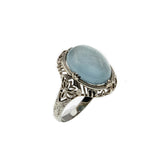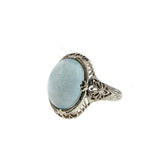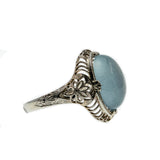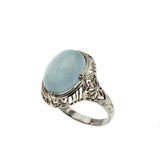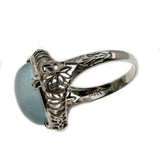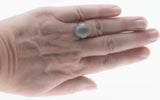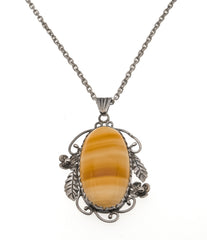Blue Mist - Art Deco 14K White Gold Natural Aquamarine Cabochon Filigree Ring (ADR244)
Rarities Antique Jewelry
Blue Mist - Art Deco 14K White gold Natural Aquamarine Cabochon Filigree Ring. This unique ring is crafted from 14K white gold, hallmarked 14K. Featuring one natural aquamarine oval cabochon, Art Deco Styling, and masterful craftsmanship. The gallery on this ring is expertly set with a beautiful sky blue aquamarine, displaying bluish/greenish/grey hues. The gallery exhibits a sea of filigree-work, which extends down the shoulders to exquisite engraved detailing. The shank is polished and smooth, which allows for easy sizing, and a comfortable fit. The aquamarine displays some natural inclusions, which I would describe it as 'Perfect Imperfections', adding interest and character to the precious gemstone. This exquisite Art Deco era ring would make a perfect a unique engagement ring, gift or addition to any antique jewelry collection.
Note: Contemporary appraisals do not reflect the value of antique jewelry. It is recommended that this Art Deco era antique ring be insured for $2800.00 (Tax Excluded). GCI report included with the ring (which confirms a natural aquamarine and the exact carat weight)
History: It has been used to heal the sick, purify water and protect sailors, to name a few of the benefits of this gorgeous stone. The meaning of the Aquamarine stone is based heavily on its namesake – the sea. Everything that the endless blue ocean represents is included in the meaning of this stone.
Why does aquamarine cost so much more than blue topaz that's almost the same color? Blue topaz is more common because the color is produced by treating colorless topaz with radiation. Aquamarine is rarer in nature, especially in fine color. Its long history as a gem also adds to its collectibility.
Aquamarine's name comes from the Latin for seawater, and ancient mariners claimed the gem would calm waves and keep sailors safe at sea. This March birthstone was also thought to bring happiness in marriage.
Gold was generally used for a couple thousand years solely to create things such as jewelry and idols for worship. This was until around 1500 BC when the ancient empire of Egypt, which benefited greatly from its gold-bearing region, Nubia, made gold the first official medium of exchange for international trade.
The 19th century saw the invention of white gold. At the time, manufacturers alloyed gold with palladium. It wasn't commercially available until 1912, when it was issued as a patent in Pforzheim, Germany, subsequently gaining popularity as a more affordable alternative to platinum in the mid-1920s.
The first fossil instances of filigree were discovered by archaeologists in ancient Greece and Mesopotamia and dated over 5,000 years ago. The name filigree comes from the latin words “filum” meaning thread and “granum” meaning grain, describing the thin metal strips used to create filigree.
The Art Deco period encompasses the 1920s and 1930s. The style began to emerge around 1915, just after WW1 when there was a huge amount of optimism in the air. The dates for Art Deco jewelry also extend from 1960s when there was an Art Deco revival which has continued until the present day.
Measurements: Face of the Ring 18.50 mm x 15.00 mm
Stone Size: Aquamarine 6.19 carats
Weight: 3.70 grams
Ring Size: 6 1/2
Condition: Excellent Note: Pristine
Origin: America
Date: Circa 1920

